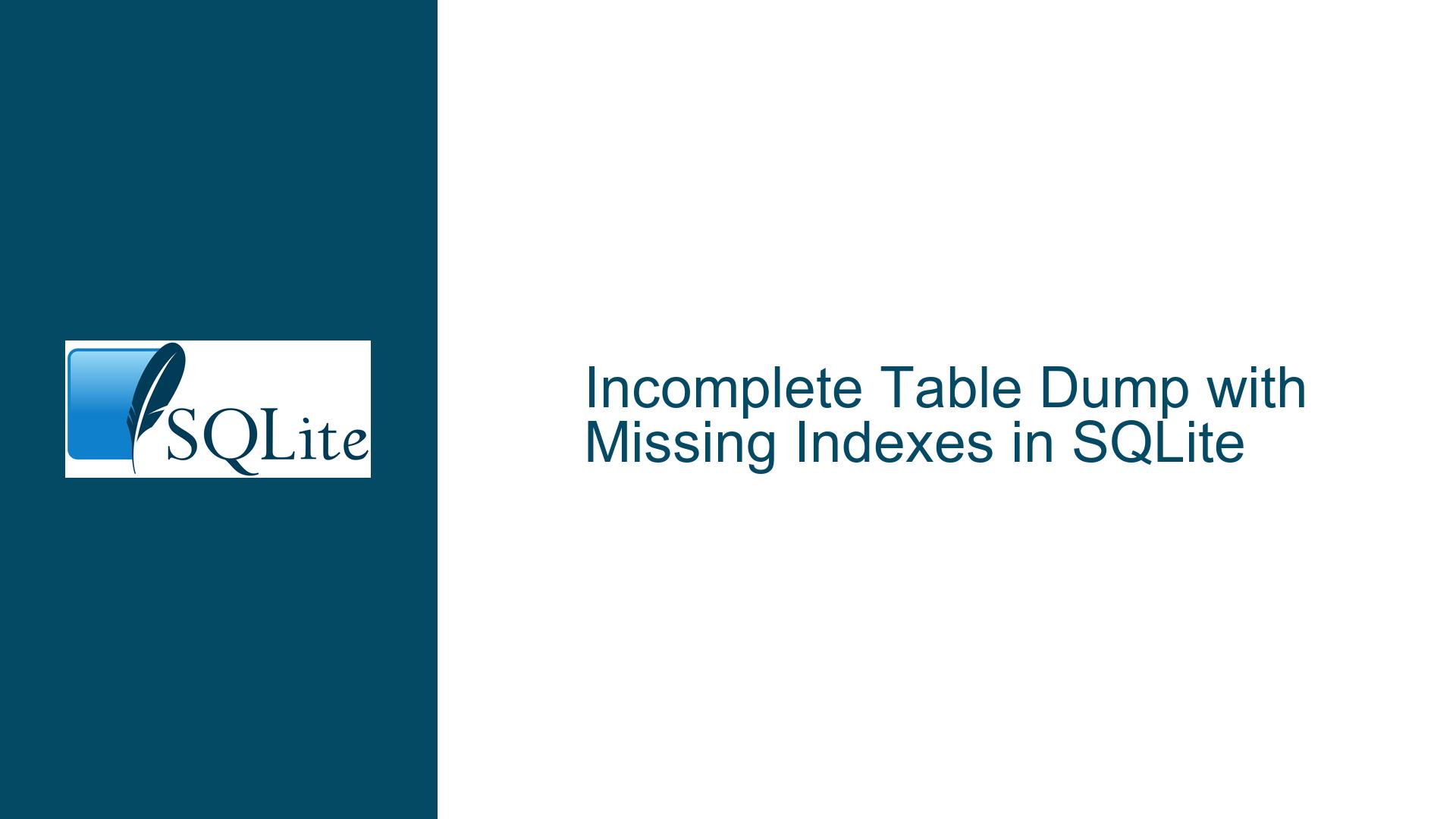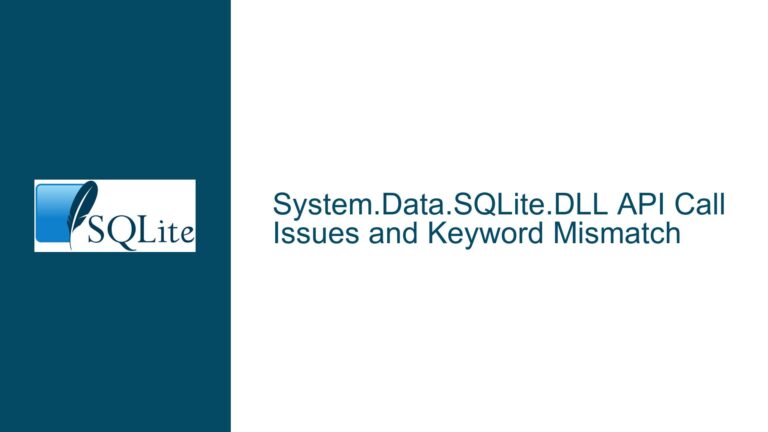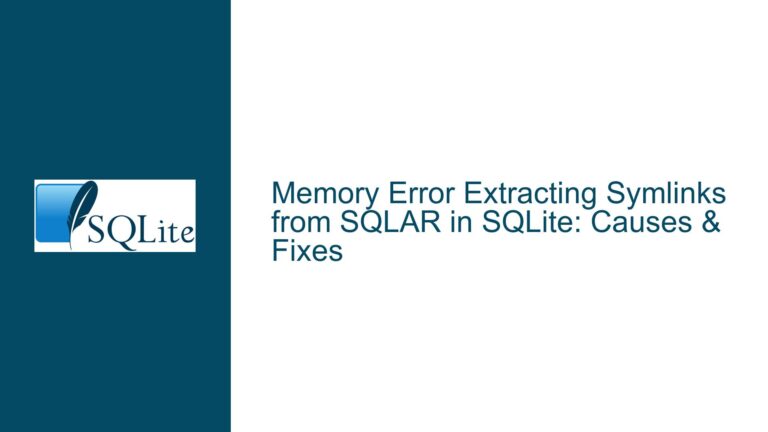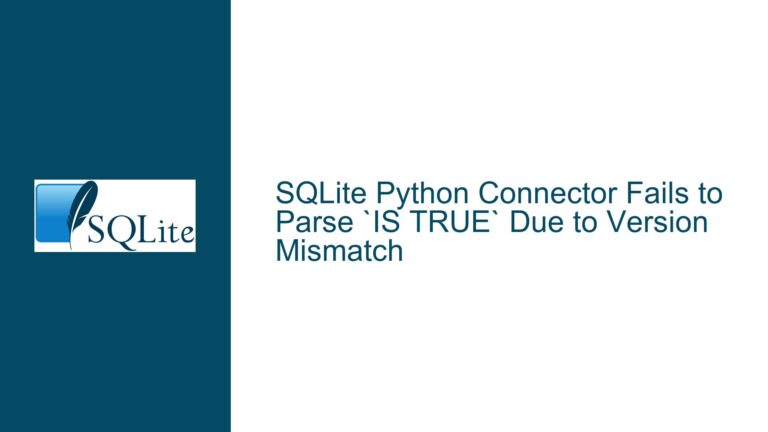Incomplete Table Dump with Missing Indexes in SQLite
SQLite .dump Command Omits Indexes for Single Table Exports
The SQLite .dump command is a powerful tool for exporting database schemas and data into a text format that can be used to recreate the database. However, when attempting to dump a single table using .dump tablename, users may encounter an issue where the associated indexes for that table are not included in the output. This behavior can be problematic when the goal is to export a table along with its indexes to another database or for backup purposes.
The .dump command, when used without specifying a table, correctly includes all tables, their data, and associated indexes. However, when a specific table is targeted, the command only outputs the table schema and its data, omitting the indexes. This inconsistency can lead to incomplete database migrations or backups, as the indexes are crucial for maintaining performance and data integrity.
.dump Command Behavior and Index Exclusion
The core issue lies in the behavior of the .dump command when a specific table is specified. By design, .dump tablename focuses on exporting the table’s schema and data but does not include the associated indexes. This behavior is not a bug but rather a limitation of the command’s implementation. The command is designed to prioritize the table’s structure and data, assuming that indexes can be recreated separately if needed.
The SQLite command-line shell provides other commands like .schema that can be used to retrieve the schema of a table, including its indexes. However, .schema does not include the data, leading to a situation where users must combine multiple commands to achieve a complete export of a table with its indexes and data. This workaround, while functional, is not as streamlined as a single command that handles both schema and data along with indexes.
Combining .schema and .dump for Complete Table Exports
To achieve a complete export of a table, including its indexes and data, users can combine the .schema and .dump commands. The .schema command retrieves the table’s schema, including any indexes, while the .dump command retrieves the table’s data. By executing both commands and redirecting their output to a file or another database, users can effectively export a table with its indexes and data.
For example, to export table1 from database1.sqlite to database2.sqlite, the following commands can be used:
sqlite3 database1.sqlite ".schema table1" | sqlite3 database2.sqlite
sqlite3 database1.sqlite ".dump table1" | sqlite3 database2.sqlite
This approach ensures that both the schema (including indexes) and the data are transferred to the new database. However, it requires multiple steps and can be cumbersome for users who frequently need to export tables with their indexes.
Automating Index Export with SQL Queries
Another approach to exporting a table with its indexes involves using SQL queries to retrieve the index creation statements from the sqlite_master table. The sqlite_master table contains the schema of the database, including the SQL statements used to create tables and indexes. By querying this table, users can extract the necessary CREATE INDEX statements and apply them to the target database.
For example, to retrieve the CREATE INDEX statements for table1, the following query can be used:
SELECT sql FROM sqlite_master WHERE tbl_name = 'table1' AND type = 'index';
This query returns the SQL statements needed to recreate the indexes for table1. Users can then execute these statements in the target database to ensure that the indexes are preserved during the export process.
Version-Specific Behavior and Workarounds
It is worth noting that the behavior of the .dump command has evolved over different versions of SQLite. In older versions, such as SQLite 3.8.7.4, the .dump tablename command correctly included the indexes in the output. However, in more recent versions, this behavior has changed, and the indexes are omitted. This version-specific behavior can lead to confusion, especially for users who are accustomed to the older behavior.
For users who require the older behavior, one option is to use an older version of SQLite for the export process. However, this is not always practical, especially in environments where multiple users or systems rely on the latest version of SQLite. In such cases, the workarounds involving .schema and SQL queries remain the most viable solutions.
Best Practices for Table Exports with Indexes
When exporting tables with their indexes, it is important to follow best practices to ensure data integrity and consistency. Here are some recommendations:
Use Combined Commands: When exporting a table, always combine the
.schemaand.dumpcommands to ensure that both the schema (including indexes) and the data are included in the export.Automate the Process: If you frequently need to export tables with their indexes, consider creating a script that automates the process. The script can execute the necessary commands and queries, reducing the risk of errors and saving time.
Verify the Export: After exporting a table, verify that the target database contains the correct schema, indexes, and data. This can be done by comparing the schema and data between the source and target databases.
Document the Process: Document the steps required to export a table with its indexes, especially if the process involves multiple commands or queries. This documentation can be useful for other team members or for future reference.
Consider Using Attach: In some cases, using the
ATTACH DATABASEcommand to link the source and target databases can simplify the export process. This allows you to directly copy tables and indexes between databases using SQL commands.
Conclusion
Exporting a single table with its indexes in SQLite requires a combination of commands and queries due to the limitations of the .dump command. By understanding the behavior of .dump and leveraging .schema and SQL queries, users can achieve a complete export of a table, including its indexes and data. While the process may require multiple steps, following best practices and automating the process can help ensure data integrity and consistency across databases.






